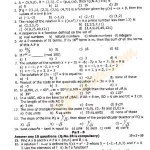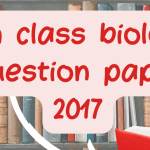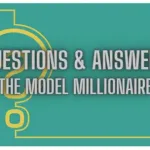What is the central theme of the poem The Tale of Custard the Dragon?
The poem highlights the contrast between appearances and reality, showing how true bravery is revealed in action, not in boasts.
Who is Custard in the poem?
Custard is a dragon who lives with Belinda and other pets. He is thought to be cowardly but proves to be brave when danger strikes.
What pets live with Belinda besides Custard?
Belinda owns a little black kitten named Ink, a grey mouse named Blink, a little yellow dog named Mustard, and a red wagon.
Why did the other pets laugh at Custard?
They laughed because Custard admitted he wanted a safe cage and seemed timid, unlike the others who boasted about their bravery.
What danger comes to Belinda’s house?
A pirate with pistols and a cutlass enters the house, threatening the safety of everyone inside.
How does Custard react to the pirate?
Custard immediately attacks the pirate, swallowing him whole, proving his courage.
Why is Custard’s bravery surprising?
Custard had always appeared cowardly, so his sudden boldness in a real crisis surprised everyone.
What lesson does the poem teach?
It teaches that one should not judge others based on outward behaviour; true qualities are revealed in tough situations.
What literary style is used in the poem?
The poem uses humour, rhyme, and a ballad style to narrate the story in a playful tone.
What does the repetition of “tickled him unmerciful” convey?
It emphasizes how the others constantly mocked Custard for his perceived cowardice.
Why is Custard called “realio trulio little pet dragon”?
The phrase adds a humorous, affectionate tone, showing how unique he is as a pet.
How is Belinda described?
Belinda is described as a brave little girl with a house full of unusual pets, including a dragon.
What role does exaggeration play in the poem?
Exaggeration adds humour, making the animals’ boasts and Custard’s actions more entertaining.
What is the irony in the poem?
The animals who claimed to be brave ran away when danger came, while Custard, who was thought to be cowardly, faced the danger.
Why do the others continue to tease Custard after the incident?
They return to their old behaviour, possibly out of pride or embarrassment, downplaying Custard’s heroism.
What is the mood of the poem?
The mood is light-hearted and humorous, even though it carries a moral lesson.
Why is Custard’s desire for a safe cage important to the plot?
It sets up the contrast between his supposed fear and his actual bravery.
What does the pirate’s arrival symbolize?
It symbolizes an unexpected challenge that reveals true character.
How does the poet create rhythm in the poem?
The use of rhyme, repetition, and a steady meter creates a song-like rhythm.
Why is the ending both funny and thoughtful?
It’s funny because the others go back to teasing Custard, and thoughtful because it shows people often ignore uncomfortable truths.
What is the significance of the name “Custard”?
It suggests softness or mildness, adding to the humorous contrast with his real courage.
How is bravery portrayed differently in Custard and the other pets?
Custard shows real action in the face of danger, while the others only claim to be brave without proof.
Why is the poem memorable for students?
It’s engaging, easy to read, humorous, and carries a meaningful message.
How does the poet describe Mustard’s bravery?
Mustard is said to be as brave as a tiger in a rage, though in reality he flees from danger.
What makes Ink and Blink’s behaviour ironic?
They often teased Custard but were the first to hide when the pirate appeared.
What is the main conflict in the poem?
The conflict is between perceived cowardice and actual courage, revealed during the pirate attack.
Why do students enjoy reading this poem?
The playful language, rhymes, and surprising twist make it entertaining and easy to remember.
How does humour enhance the message of the poem?
Humour makes the moral lesson more relatable and enjoyable without sounding preachy.
What is the structure of the poem?
The poem is written in quatrains with a consistent rhyme scheme that keeps the narrative flowing.
How does Custard’s reaction inspire readers?
It shows that even those underestimated can rise to the occasion when it matters.
Why does the poet use animal characters?
Animal characters make the story imaginative and add to the humour and charm of the poem.
What is the takeaway about self-perception from the poem?
People may underestimate themselves, but real challenges reveal their hidden strengths.
Why is the poem suitable for younger readers?
Its simple language, fun rhymes, and moral lesson make it appealing to children.
What is the most dramatic moment in the poem?
The moment Custard charges at the pirate and defeats him.
How is Custard’s personality shown before the pirate arrives?
He is shown as shy, gentle, and preferring safety over adventure.
Why does the poet use repetition in describing the pets?
It builds rhythm and helps readers remember the characters easily.
What is meant by “mouth like a fireplace”?
It’s a metaphor suggesting Custard’s fiery breath and potential danger as a dragon.
How does the ending keep the tone playful?
Despite the heroics, the others’ return to teasing keeps the mood light.
What moral lesson can be applied to everyday life?
Don’t judge people based on appearances; actions speak louder than words.
Why does Belinda keep such unusual pets?
It adds to the whimsical, imaginative setting of the poem.
How does the poet balance humour with a lesson?
By making the events amusing while still showing a clear moral truth.
What is the role of the pirate in the poem’s structure?
He serves as the catalyst for revealing true bravery.
Why do the others run from the pirate?
They panic and reveal that their bravery was only in words.
How does the poem challenge stereotypes of courage?
It shows that quiet individuals can be the bravest in real danger.
Why is the poem still popular in school curriculums?
Its mix of fun, rhythm, and life lesson makes it timeless for students.
If you want, I can also prepare another 50-question extended set for higher exam-level practice, where answers are slightly more analytical rather than direct. That would make this resource even stronger for study use.
Recommended Indian Books for “The Tale of Custard the Dragon” Question Answer
-
NCERT English Class 10 – First Flight – National Council of Educational Research and Training – Includes the complete poem, word meanings, reference-to-context questions, and critical thinking exercises.
-
Golden English Guide Class 10 – New Age International – Contains chapter-wise explanations, long and short answer questions, and sample exam papers.
-
All in One English Language & Literature Class 10 – Arihant Publications – Offers summary, character sketches, poetic devices, and HOTS (Higher Order Thinking Skills) questions.
-
Evergreen English Core Class 10 – Evergreen Publications – Features detailed notes, NCERT solutions, and practice tests for board exams.
-
Together with English Language & Literature Class 10 – Rachna Sagar – Includes theme-based questions, extract-based questions, and sample answers.
-
Oswaal CBSE Question Bank Class 10 English – Oswaal Books – Provides exam-focused short notes, MCQs, and previous years’ solved questions.
-
CBSE Chapterwise English Literature Class 10 – Full Marks – Covers textual questions, model answers, and grammar integration.
-
Xam Idea English Language & Literature Class 10 – VK Global – Combines analytical questions, explanation of poetic devices, and probable exam questions.
-
Score More English Literature Class 10 – Saraswati House – Includes theme discussions, sample essays, and additional practice questions.
-
Self-Study English Class 10 Literature – Dinesh Publications – Offers self-test sections, revision summaries, and vocabulary exercises.
-
Target English Literature Class 10 – Target Publications – Features extract-based questions, extra practice worksheets, and value-based questions.
-
Comprehensive English Class 10 – Laxmi Publications – Contains grammar-linked comprehension and answer-writing guidelines.
-
Exam Idea English Literature Class 10 – New Saraswati House – Offers mix of factual, inferential, and evaluative questions.
-
Pradeep’s English Literature Guide Class 10 – Pradeep Publications – Includes theme analysis, long answers, and quick review charts.
-
Pearson CBSE English Class 10 – Pearson Education – Blends textbook solutions with exam-oriented preparation tips.
-
CBSE Success Master English Class 10 – Arihant Experts – Covers analytical Q&A, extract-based practice, and last-minute revision notes.
-
EduCart CBSE English Question Bank Class 10 – EduCart – Offers real exam-style Q&A, mind maps, and flow charts for memory aid.
-
Perfect 10 English Literature Class 10 – Bharti Bhawan – Provides simple summaries, discussion-based questions, and test-yourself tasks.
-
Topper’s English Guide Class 10 – Full Marks – Combines model answers, creative writing prompts, and summary notes.
-
Complete English Preparation Class 10 – VK Global – Includes structured explanations, long and short questions, and extract interpretations.
Article: The Tale of Custard the Dragon Question Answer
The poem The Tale of Custard the Dragon by Ogden Nash holds a special place in the Class 10 English curriculum. Its charm lies not just in the humorous tone, but in the deeper message about courage and appearances. Students often find that preparing well for this poem’s question-answer section requires more than just reading—it needs structured revision, thematic understanding, and familiarity with different question formats.
Good preparation starts with understanding the storyline. The poem revolves around Custard, a dragon who appears timid but shows true bravery when danger arrives. While the other pets and even Belinda boast of their courage, they all retreat in fear when a pirate attacks. Custard, who was mocked for wanting a safe cage, becomes the unexpected hero.
Exam questions for this poem generally fall into three categories—factual, interpretative, and analytical. Factual questions check if the student remembers details about the characters, events, and setting. Interpretative questions go deeper, asking about themes like irony, the moral lesson, or the poet’s tone. Analytical questions often focus on poetic devices such as rhyme scheme, repetition, and imagery.
The best books for this topic combine all three types of questions and provide model answers that follow exam patterns. Guides like Golden, Together With, and Oswaal include extract-based questions, which are now a frequent part of board exams. These questions give a small stanza and ask students to identify speakers, explain meanings, and link to the overall theme.
For better retention, students should pair reading the textbook with solving varied question sets from at least two different publishers. This ensures they’re exposed to multiple answer styles and interpretations. Writing practice is essential—model answers should be studied for structure, but rewritten in the student’s own words to maintain originality and understanding.
The poem’s playful nature can sometimes make students overlook the moral depth it carries. Teachers often recommend writing short theme-based summaries to strengthen analytical responses. It’s equally important to revise the figurative language, as poetic device identification and explanation can fetch easy marks.
When preparing for the exam, keep an eye on time management. Many students lose marks not because they don’t know the answers, but because they can’t express them concisely under time pressure. Practising with past papers and mock tests from these recommended books can help in sharpening both content knowledge and speed.
In short, effective preparation for The Tale of Custard the Dragon question answers blends a clear grasp of the poem’s meaning, familiarity with varied question patterns, and consistent writing practice.
FAQ for the tale of custard the dragon question answer
What is the main theme of The Tale of Custard the Dragon?
It highlights the difference between appearances and reality, showing true bravery emerges in real situations.
Who wrote The Tale of Custard the Dragon?
The poem was written by Ogden Nash.
Why is Custard called a coward in the poem?
He often expressed his wish for a safe cage, which the others saw as a sign of fear.
How does Custard prove his bravery?
He fights and defeats the pirate, protecting Belinda and the other pets.
What type of questions come from this poem in exams?
Typically factual, extract-based, and analytical questions are asked.
Why do exam guides focus on extract-based questions for this poem?
Because they test both comprehension and the ability to connect stanzas to the theme.
Which poetic devices are important to remember for this poem?
Rhyme scheme, repetition, and imagery are key devices used by the poet.
Why do the other pets continue to mock Custard after he saves them?
They likely feel embarrassed and want to hide their fear by joking.
Is The Tale of Custard the Dragon a serious poem?
It’s humorous in tone but carries a serious message about courage.
How can I score well in questions from this poem?
By understanding the theme, practising extract-based answers, and writing concisely in exams.
Latest Posts
- Step-by-step guide to download and apply for jee mains admit card 202
- Comprehensive 2025 government holidays and recruitment details for job seekers
- JEE Mains Admit Card 2025: Your Step-by-Step Guide to Downloading the Hall Ticket
- Everything You Need to Know About 2025 Government Holidays Recruitment
- Comprehensive Guide to rrb d group recruitment 2025 – Eligibility, Vacancies, and Application
- Detailed guide to nps trust recruitment 2025 vacancies, eligibility and apply process
- Comprehensive guide to hpcl recruitment 2025 notification, vacancies, and application process
- ignou bed admission 2025 complete recruitment guide with eligibility and process
- Comprehensive Guide to Indian Army Agniveer Recruitment 2025 Notification and Jobs
- Everything You Must Know About CBSE Board Exams 2025 Changes & New Rules




